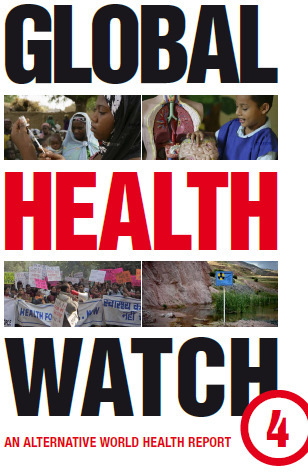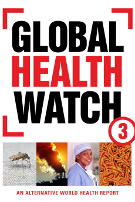13.3 Maternal, Infant and Young Child Nutrition
Contents
- documents
- issues before the Assembly
- PHM comment pre debate
- report of debate
- PHM comment post debate
Documents
- Document A65/11 and A65/11 Corr.1
- Document A65/12
- See Watchers Commentary and Report of Discussion at EB130
- See WHO Watch topic page on Food and Nutrition
- PHM Statement to the Committee
The issues before the Assembly
Document A65/11 puts before the Assembly a draft implementation plan on maternal, infant and young child nutrition for adoption.
The covering note also reports on progress made by countries in the implementation of the International Code of Marketing of Breast-milk Substitutes.
Paper A65/12 provides an overview of the epidemiology, nutrition science and interventions of relevance to nutrition of women in relation to reproduction.
The paper lists a number of initiatives which the Secretariat could take up if so commissioned (and funded) to progress the issues canvassed in the paper.
PHM comment pre-debate
There is a lot which is good in the draft comprehensive implementation plan (CIP) and we welcome many of the components of the plan at the country level. The evidence based approach adopted in the draft is appreciated.
However, the plan is deficient in two main respects: first, it fails to deal with the intersection of trade relations and nutrition; and second, it steers clear of the challenges to be faced in building a regulatory framework to regulate transnational agribusiness and food corporations at global and country level.
In contrast to the failure to confront the regulatory challenge, new provisions regarding investor state dispute settlement now being inserted into preferential trade agreements provide transnational corporations with powerful new defenses against regulation at both the national and international levels. This has been clearly demonstrated in the attack by Big Tobacco on the plain packaging policies of Uruguay and Australia. Resolution WHA59.26 (p37) mandates the WHO to work with MS to achieve coherence across trade and health policies. This must be maintained.
The commercial interests of transnational agribusiness, food corporations and retailers play a powerful role in shaping nutrition and malnutrition through marketing and through price relativities. The challenge of regulation must be faced. Diets of the poor everywhere are deteriorating, particularly in middle income countries with significant urban populations.
Trade and commercial factors contribute powerfully to obesity in children and its relation to NCDs. Nutrition cannot be addressed in isolation from NCDs. We urge MS to take advantage of the momentum created by the UN High Level Meeting on NCDs.
Nutrition needs to be understood in the context of food security (and insecurity). Speculation in food commodities due to deregulation of commodities derivative markets in 2000 was the main factor in a 50% rise in food prices in 2008.
More than 200 million hectares of land have been sold, mainly to transnational companies, and mainly in Africa, over the past decade. The employment generated seems to be greatly outweighed by displacement of small producers.
Meanwhile the diversion of land and grain from food to biofuels is contributing to rising food prices and jeopardising food security and nutrition.
The stalemate in the so-called Doha Development Round in the WTO leaves in place agricultural subsidy and protection policies which have been highly detrimental to small producers.
There has been a somewhat uncritical acceptance of ready-to-use therapeutic foods (RUTF) in settings which go beyond the treatment of severe acute malnutrition. Its widespread and unregulated use poses a threat to replace breast feeding and medicalise the prevention and management of undernutrition.
WHO cannot address the issues of trade and the regulation of transnational industry alone but it can take a pro-active stance in working with other competent intergovernmental bodies.
A65/12 is a useful paper. It is good to see attention given to the non-clinical aspects of prevention and ‘treatment’ including water and sanitation. Clearly a multi-sectoral approach is called for with a focus on food security.
Effective planning for food security and food-related prevention and response to disasters is very important for meeting the nutritional needs of mothers and young children; such a strategy also requires the cooperation and integration of multiple stakeholders and sectors.
Read PHM's statement to the Committee on this item
Report of debate
Many positive comments and commendations regarding the comprehensive implementation plan (CIP) were made. Member states also reiterated the importance of and raised concerns about a variety of fronts related to the CIP.
The double burden of under- and over-nutrition and the related NCD burden were vocalized by many countries.
The important of addressing nutrition through an SDH and Primary Health Care lens as well as the need for a multi-sectorial and integrated approach was stressed by Paraguay, Russian Federation, Mozambique, Thailand, India, Iraq, and Morocco.
A necessary focus on women and children’s nutrition and education including support for breast feeding was raised by Denmark, Canada, China, Tanzania, Yemen, and the Marshall Islands.
Regulation in marketing (eg. of breast milk substitutes) and strengthening of related legislation is needed. Marketing and use of RUTF is also concern according to India, Bangladesh, and Thailand.
Opportunities to make a significant impact with some simple initiatives should be taken advantage of including reduction in salt and fat intake that are also very cost-effective, says Denmark on behalf of the EU.
More work is needed on indicators, including possible addition of more indicators such as Vitamin A, access to safe drinking water, micronutrients, wasting, and anaemia according to Jamaica, Bahamas, Japan, Bhutan, and Swaziland.
Surveillance and monitoring are crucial, and a global plan is needed that engages MS and stakeholders at all levels according to Morocco, Denmark, and Canada.
One intervention to improve nutrition, proposed by Paraguay, includes incentives and cash-transfer programs, especially for the very poor, and further attention to poverty as an underlying challenge for nutrition.
Paraguay and the UAE stated that central to an effective strategy for nutrition are the empowerment and education of women—including knowledge of self-defense, birth spacing and family planning.
Finally, Japan and India noted that in addressing nutritional challenges in the world, WHO should provide technical assistance, conduct training relevant to local situation, support integration of effective interventions, and monitor Member States.
Post debate WHO Watch comment
The issues touched upon in this debate are hugely important in shaping the health and life chances of billions of people. It is good that WHO is taking a leadership role with respect to many of the key issues. The evidence based approach adopted in these reports is an important contribution.
However, WHO’s reluctance (or inability) to confront the trade dimension of malnutrition and the need to regulate the transnational supply chain, is a serious weakness. WHO cannot address food security and adequate nutrition by itself but it has an obligation to identify all of the causes of malnutrition including the structural determinants such as trade, agriculture policy and food marketing. Clearly while the donor countries control WHO’s agenda its capacity to speak truth to power is muted.
The Secretariat’s report on compliance with the Code for the Marketing of Breast Milk Substitutes demonstrates poor compliance in many countries. Exclusive breast feeding rates to 6 months is estimated at 37% globally. The Code should have been cast as a binding statute from the beginning and it is time to create such an instrument.
Food (in)security is a very direct reflection of unequal access to resources and the unequal power relations which perpetuate unequal access to resources. Over-nutrition in the rich countries, including excessive meat intake, contributes directly to the undernutrition of poor people in poor countries (not to speak of biofuels). In this context the pre-occupation of certain MS with micronutrients and ready to use foods in the face of widespread protein calorie malnutrition is not appropriate. The unequal power relations which maintain an unfair distribution of foods are reflected in the current governance structures of WHO.
| Attachment | Size |
|---|---|
| PHM_Nutrition_WHA65.pdf | 52.78 KB |




